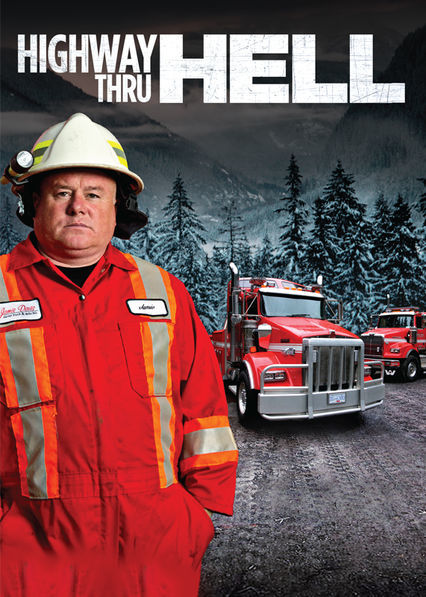
Posted on 12/12/2019 8:08:29 AM PST by SeekAndFind
American and Canadian governments provide many of the same types of services to those planning for retirement and those who have retired. Overall, however, Canadian retirees find life after work to be much less stressful, as fears of running out of money are not as prevalent as they are in the U.S.—fears that drive some American retirees to find ways to supplement their retirement incomes.
A major benefit for Canadians is the publicly-funded universal healthcare system, which provides them with essential medical services throughout their lives, as well as in retirement, without co-pays or deductibles. In contrast, unless they are disabled or extremely low income, Americans have no single-payer insurance until they reach age 65, when they can qualify for Medicare. Even that is far from comprehensive. Medicare covers about 62% of healthcare costs. A 2018 study by the Employee Benefits Research Institute estimates that a 65-year-old couple, without employer health coverage, will require approximately $400,000 to comfortably afford Medicare premiums and out-of-pocket medical expenses.
When it comes to saving for retirement, Canada and America both offer individuals similar financial vehicles, with similar tax advantages.
In Canada, Registered Retirement Savings Plans (RRSP) allow investors to receive a tax deduction on their yearly contributions. Money invested in the plan grows tax-deferred, which advances the benefits of compounded returns. Contributions can be made until the age of 71, and the government sets maximum limits on the amount that can be placed into an RRSP account (18% of a worker's pay, up to $26,500 for 2019). Withdrawals can occur at any time but are classified as taxable income, which becomes subject to withholding taxes. In the year in which the taxpayer turns 71, the RRSP must be either cashed out or rolled over into an annuity or Registered Retirement Income Fund (RRIF).
For American taxpayers, a traditional IRA is structured to provide the same sorts of benefits, whereby contributions are tax-deductible and capital gains are tax-deferred until distributions out of the account are realized. Age stipulations are similar; investors can contribute to their traditional IRA until they reach 70½, at which point mandatory distributions are required.
IRA contributions are more limited, however. For 2019, the IRS states that "the maximum contribution that can be made to a traditional or Roth IRA, is the smaller of $6,000, or the amount of your taxable compensation for the taxable year." People over the age of 50 can sock away an additional $1,000 per year in their IRAs. Also, IRAs carry penalties if funds are withdrawn before the taxpayer reaches age 59½.
In terms of contribution amounts, American 401(k) plans, offered through an employer, are more comparable to RRSPs: the annual maximum in 2019 is $19,000, or $25,000 for those over age 50. At May 2019 exchange rates, CAD $26,500 equals USD $19,585.
Despite the fact that RRSPs allow for greater contributions, wealthy Canadians tend to pay more taxes than their southern neighbors.
Canada's Tax-Free Savings Account (TFSA) is fairly similar to Roth IRAs in the U.S. Both of these retirement-focused vehicles are funded with after-tax money (there's no deduction for the contribution), but they do grow tax-free, and withdrawals are not taxed. Canadian residents over the age of 18 can contribute up to $6,000 to TFSAs in 2019; if you're contributing in 2019 for the first time, you're eligible to deposit $63,500, provided you turned 18 in 2009 (the year the accounts originated). The annual maximum contribution to a Roth IRA is also $6,000, or $7,000 for those over the age of 50. Another similarity between these accounts: There is no limit on when one must stop making contributions and begin withdrawing money.
TFSAs offer two significant advantages over Roth IRAs. Young Canadians saving for retirement are able to carry over their contributions to future years, while such an option is not available with Roth IRAs. For example, if a taxpayer is 35 years old and unable to contribute $6,000 into their account, due to an unforeseen outlay, next year the total allowable amount accumulates to $12,000. The contribution limits have changed year-to-year since the TFSA was first introduced in 2009, with the limit sometimes set at different ranges between $5,000 and $10,000; the current cumulative limit for 2019 is $63,500.
Secondly, while sums equivalent to contributions can be withdrawn at any time, distributions of earnings out of Roth IRAs must be classified as "qualified" in order to avoid taxes. Qualified distributions are those made after the account has been open for five years, and the taxpayer is either disabled or is over 59½ years old. Canada's plan does offer more flexibility in terms of providing benefits for those planning for retirement.
Both the U.S. and Canada provide workers with a guaranteed income once they reach retirement age. These federal pension plans differ from each other in several ways, however.
Canada has a three-part system: Old Age Security (OAS), financed by Canadian tax dollars, provides benefits to eligible Canadians 65 years of age and older; the Canada Pension Plan (CPP), funded by payroll deductions (like Social Security in the U.S), makes benefits available as early as age 60; and the Guaranteed Income Supplement (GIS) is available to the very poorest Canadians.
OAS provides benefits to eligible citizens 65 years of age and older. Although there are complex rules to determine the amount of the pension payment, typically a person who has lived in Canada for 40 years, after turning 18, is qualified to receive the full payment (as of 2019) of $601.45 per month. Additionally, Guaranteed Income Supplements ($540.77 or $898.32, dependent on marital status) and Allowances ($1,142.22) are provided for pensioners with an annual income between $18,240 and $33,744 annually. Much like with Social Security, OAS beneficiaries who choose to delay receiving benefits can get higher payouts; currently, benefits can be delayed for up to five years, up to age 70. OAS benefits are not considered taxable income, but they do carry certain payback provisions for high-income earners.
To subsidize universal healthcare and pensions, Canada imposes higher income taxes on its citizens than the U.S. does on its residents.
American Social Security, on the other hand, does not focus exclusively on providing retirement income but encompasses such additional areas as disability income, survivor benefits, and Medicare (to the extent that Medicare premiums are taken out of Social Security benefits). Social Security income tax issues are slightly more complex and depend on such factors as the recipient's marital status and whether or not income was generated from other sources; the information provided in the IRS Form SSA-1099 will determine the tax rate for the benefit.
Individuals are eligible to receive partial benefits upon turning 62 and full benefits ($2,861 per month is the maximum as of 2019) once they are 66 or 67, depending on the year of birth. Eligibility is determined through a credit system, whereby qualified recipients must obtain a minimum of 40 credits, and they can earn additional credits to increase their payments by delaying initial benefit payments up to age 70.
Generally, Canada's retirement programs are considered safer, as they are funded out of general tax revenues. There are continuous fears in the U.S. that the Social Security system, which is funded through payroll taxes on employee wages, will become bankrupt.
Canada is cold.
Financially illiterate assessment:
Single payer is NOT health insurance, it is waiting for care that never comes.
What other grossly incorrect economic errors exist?
Who writes this trash?
We left the PRC (Peoples Republic of California) 27 years ago for Arizona.
An Arizona buck is worth about 3 San Diego buck in the cost of living exchange. I can open carry and we are much less regulated by out of control nanny government.
Gas is $1.00 or more cheaper per gallon. I grow fresh fruit and veggies in my back yard year round. The tomatoes and peppers are ripening along with the lemons and tangerines right now.
As for the summer, the AC keeps the house at a constant 78 degrees for $230 a month total electric bill with no threat of rolling blackouts. The Colorado river gives us all the water we need and is a cool place to take a dip in August.
Stay where you are.
I understand...I suppose it depends on where you live.
My sister lives in Lake Havasu City ... I’ll take that city all year round.
The hotter the better...
https://www.poemhunter.com/poem/the-cremation-of-sam-mcgee/
I have known several Canadians who worked down here, and upon retirement every one of them went back home.
Leading me to believe that Canada offered a sweeter deal.
It’s cold, the mosquitoes are bigger than cats, mostly there is nothing there, the people are mostly LIB nitwits, there is no free speech, their government is run by LIB losers...and so forth. Retiring to canada is great FOR LIBs. Get OUT!


Canada

Florida
Perfect.
Almost 1/4 of the population of Canada are gay, and or child molesters and or homeless and or Smoking Marijuana from the time they wake up in the morning until the time they go to bed at night.
Oh wait.. that’s California.
and only six+ month waits for MRIs, CAT scans and other needed diagnostic procedures.
But isn’t that about 16 beers in Celsius?
Oh and in America they don't put mayonnaise on hamburgers.
As in “little whippersnappers are stealing my Old Age Security checks from my mailbox...”
Who are they to define “old age” anyway...


I guess you can’t beat Canada for a fun time! :)


Oh and in America they don’t put mayonnaise on hamburgers.....Oh? And what do you cut the Carolina Reaper Sauce with? HMMM?


Disclaimer: Opinions posted on Free Republic are those of the individual posters and do not necessarily represent the opinion of Free Republic or its management. All materials posted herein are protected by copyright law and the exemption for fair use of copyrighted works.